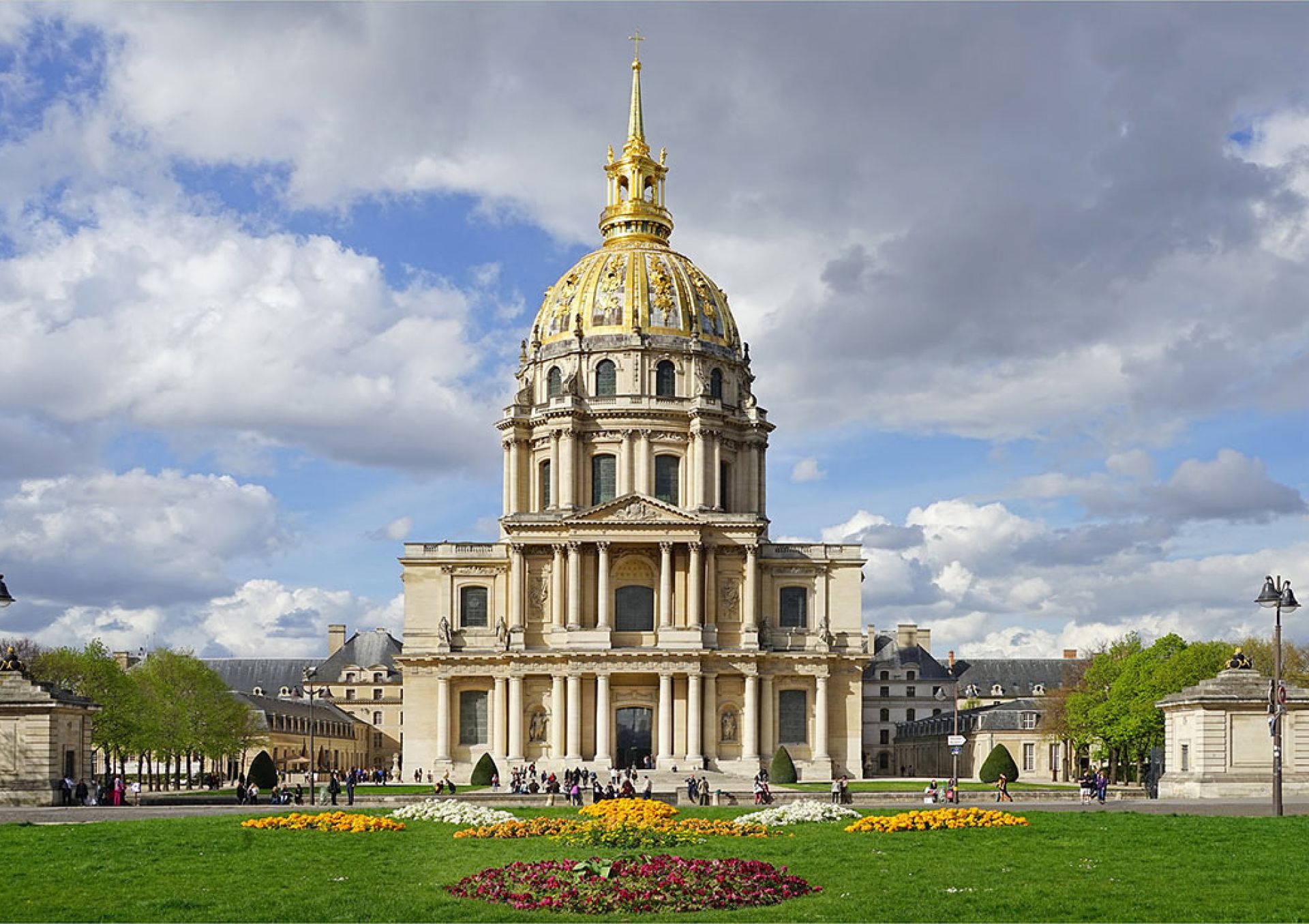All content and media files are published under a Creative Commons Attribution-ShareAlike 4.0 International License (CC BY-SA 4.0)
One of the most audacious projects of the French king Louis XIV, Hotel des Invalides, was designed to become a presentable shelter and hospital for former soldiers who suffered during the war and could accommodate 4,000 people. Today, it is one of the most significant symbols of Paris and the most visited tourist attraction.
The majestic landmark of medieval architecture was erected in 1677. It became one of the first residences for the invalids in Europe, whom it receives with due respect and hospitality to this day. Besides, an elegant shrine was built on its premises to house a soldiers’ church. This way, the cathedral was like a nest-doll – a temple inside a temple with a giant dome decorated with prizes of war. The palatial complex of invalids resembled a small provincial town with a tapestry room and a shoemaker’s shop. Even Emperor Napoleon I, who personally awarded officers with the Orders of the Legion of Honour in 1804, held in high esteem the brave “townspeople.” Over time, the Hotel des Invalides turned gradually into a museum. In 1905, the Army Museum placed its collections within its walls. Old captured and French-originated cannons adorned the square in front of the magnificent facade. In the Relief Map Museum, which moved here from the Tuileries Palace, you can see about a hundred models from the times of Louis XIV. Military outfits and weapons are displayed in the halls of the Museum of the Order of the Liberation. It was honored by such iconic personalities as French President Charles de Gaulle, US President Dwight D. Eisenhower, King George VI of the United Kingdom, Mohammed V, the sultan of Morocco, and British prime minister Winston Churchill. It also houses the only museum in France focusing on the history of the 20th century, the Museum of Contemporary History. At the heart of the Hotel des Invalides lies the ancient necropolis, where the author of “la Marseillaise,” Claude Joseph Rouget de Lisle, the outstanding French engineer Marquis de Vauban, brothers and son of Napoleon I, as well as the French Emperor Napoleon Bonaparte were buried. The stone sarcophagus of the latter is made of aventurine quartzite and is guarded by two bronze statues with a crown, scepter, and orb in their hands.
